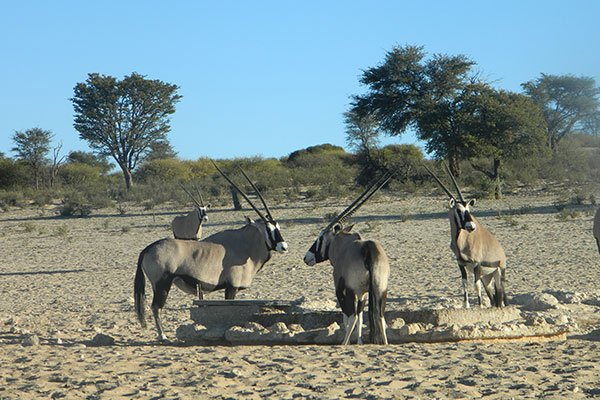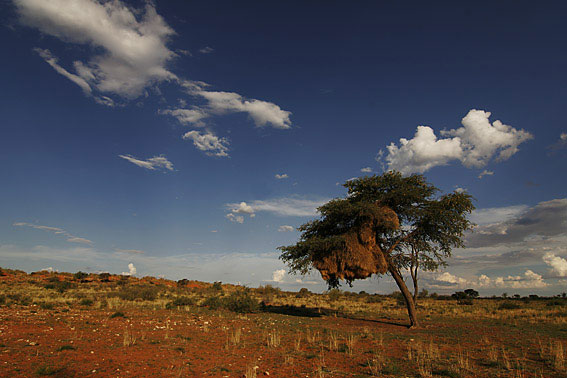Ta Shebube
Wildlife
Wildlife The Kalahari is an arid region with a rainfall of 150 mm per annum, mainly between January and April. In some years, rainfall is less than 100 mm. Day temperatures can easily exceed 40°C in the summer while winter days are sunny with night temperatures often below zero.The trees have a widespread, deep root system, which enable them to grow to a considerable height even under desert conditions.
In the midday heat the animals can rest in the cooling shade of these trees. Other plants of the Kalahari include the shepherd tree, black thorn, desert melon, tsamma melon, devil’s thorn, and a variety of grasses. Most of them are extremely drought tolerant and capable of living in very extreme conditions.
“The Shepherd’s Tree is one of the few trees that will grow on the slopes of sand dunes where the shifting sands constantly expose roots, making survival a struggle for most plants. The Shepherd’s Tree is a stocky evergreen tree that can grow to a height of over 36 feet (11 meters), but is usually much shorter. It has a dense, round to spreading crown and a distinctly smooth, whitish trunk. The tree has heavily scented, small, star-shaped flowers in clusters that are yellowish-green and fruits that are berry-like.”
The tree is often called the Tree of Life, as it offers sustenance to both humans and animals. This tree is a valuable source of shade. Daytime temperatures beneath this tree have been found to be as much as 21 degrees Celsius cooler than that of the surrounding open area. The big cat species are fond of resting under these trees during the heat of the day. The Shepherd’s Tree also has a large range of indigenous uses by man, especially during periods of drought when there is little else to eat.
Another plant of immense importance for survival in the desert is the tsamma melon, an ancestral variety of the modern day water melon. It is very drought resistant and contains over 90% water and is used both by animals and humans as a source of water. Tsamma melon has also been an important source of food for generations.


